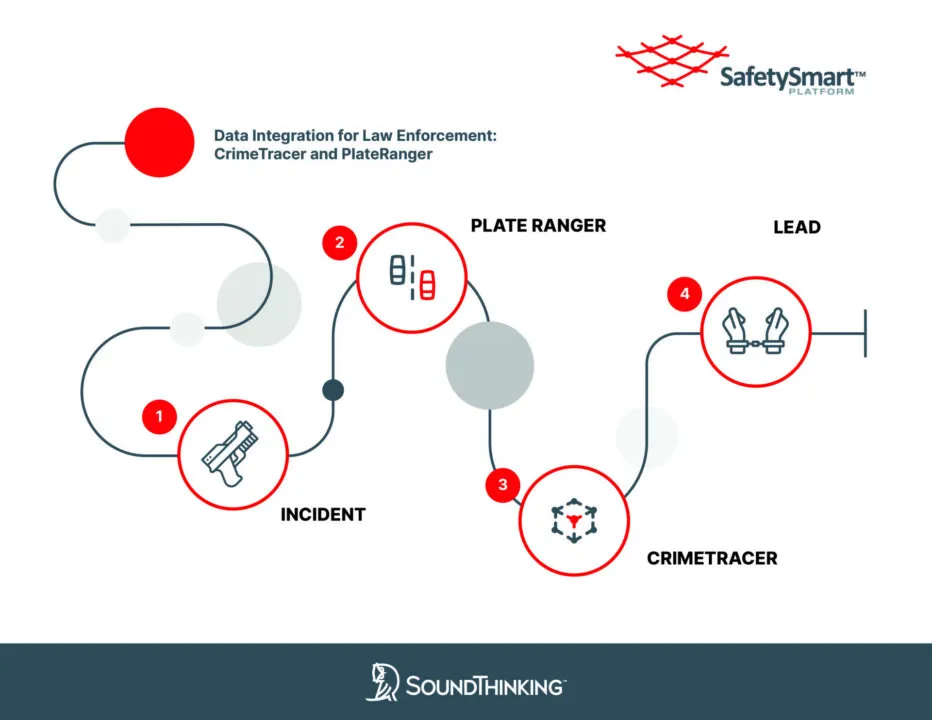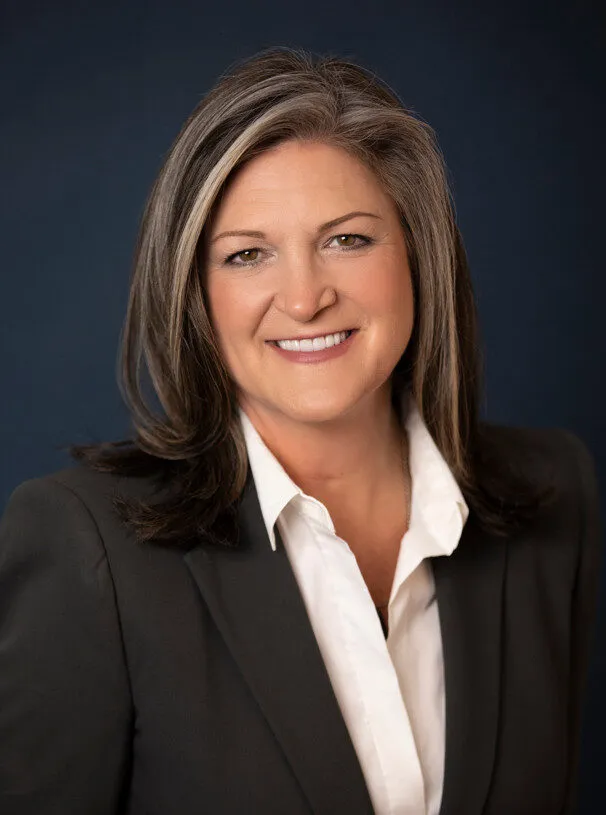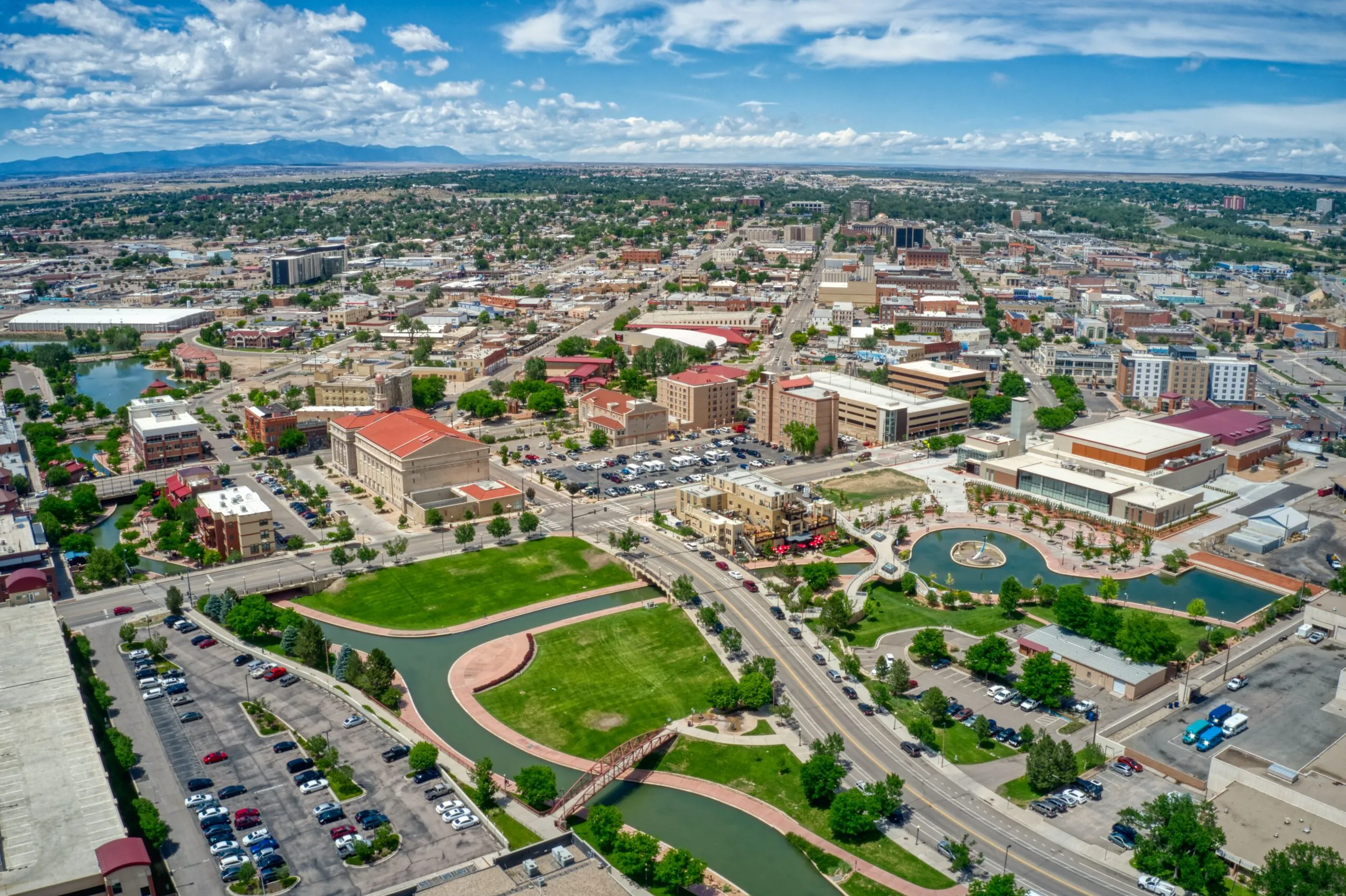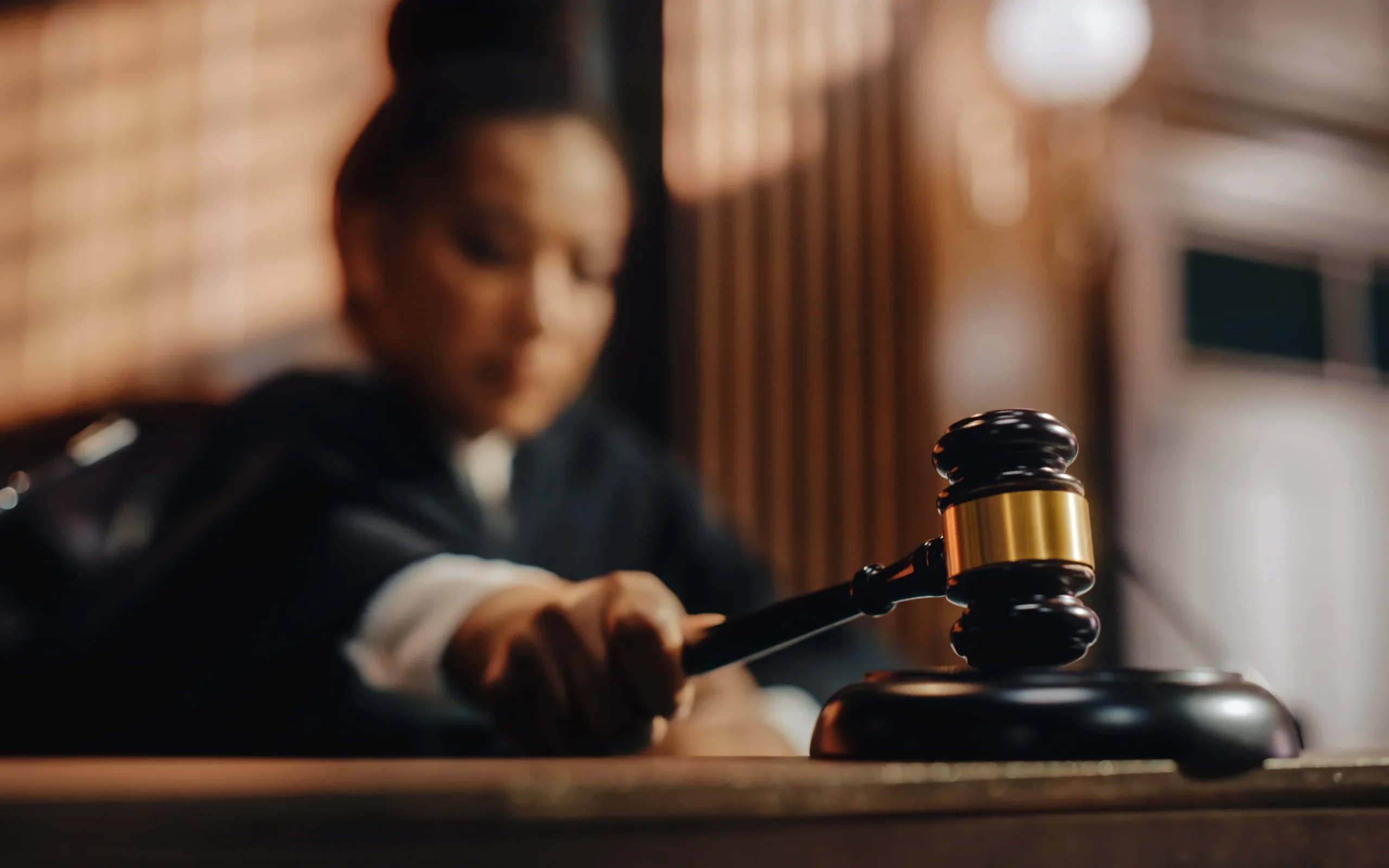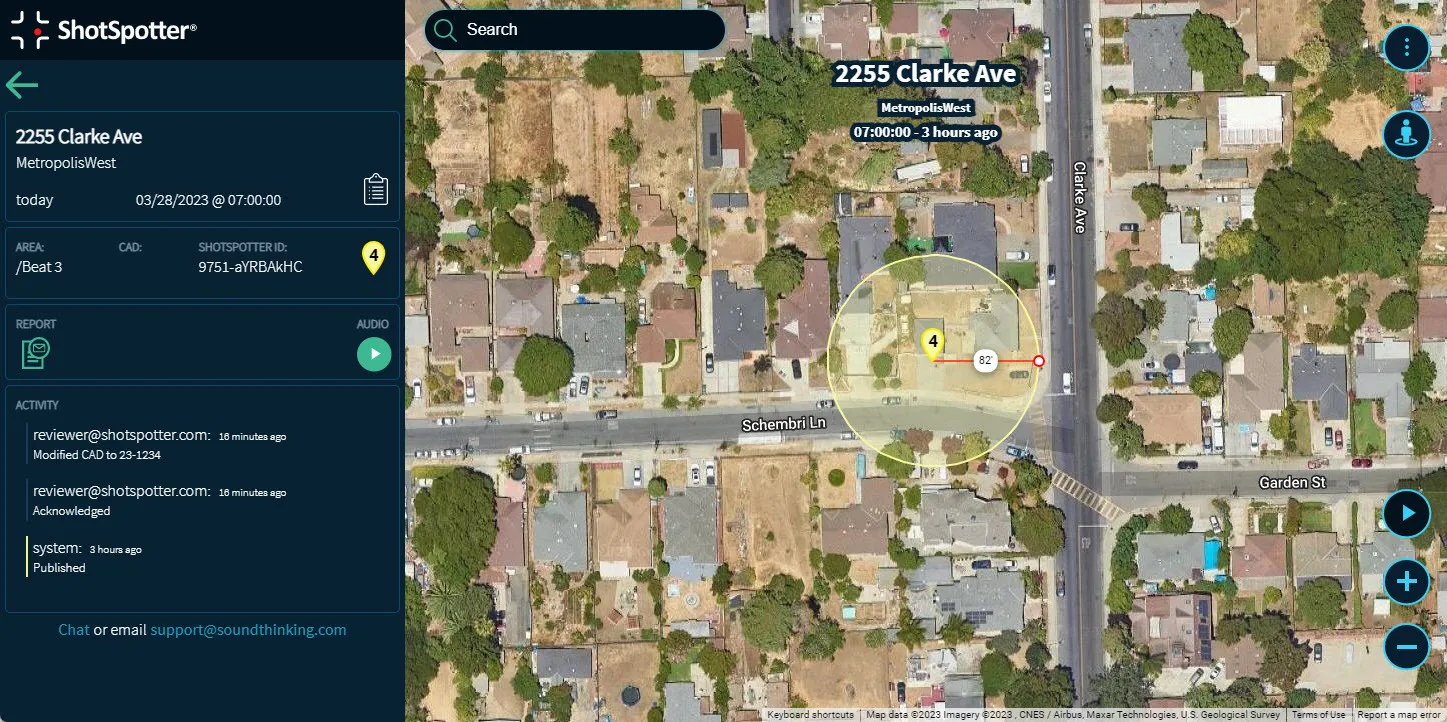https://soundthinking.com.br/The value of ShotSpotter® doesn’t end at the crime scene. Yes, the primary purpose of the outdoor gunshot detection technology is to get first responders to the scene as quickly as possible – to save lives and gather evidence – but ShotSpotter evidence also provides essential evidence at trial. Read on, detectives and prosecutors!
I was an Assistant District Attorney in Oakland, California – a long-time ShotSpotter customer – for 25 years. I saw more than my fair share of felony trials involving gunfire in public, mostly murders, and I was a member of the DA’s Officer-Involved Shooting Team. As a veteran ADA, I had the sole responsibility of charging homicides investigated by the Oakland Police Department.
These are my top three potential game-changing uses for ShotSpotter evidence at trial.
1. Play the audio recording of the shooting for the judge and jury
Yes, our sensors capture and record the actual shooting – not an after-the-fact recreation. The Investigative Lead Summary (ILS) – available to customers simultaneously with an alert being issued – includes links to up to four audio files. SoundThinking maintains audio recordings in our database for a specified amount of time.
Does your case require proving intent to kill? Or premeditation? The cadence of the gunfire, the exact amount of time that passed between shots or volleys of shots, can be proven by expert witness testimony to the millisecond. That evidence can make the difference between first-degree murder and heat-of-passion voluntary manslaughter … as it did in a tragic domestic violence case in Jennings, MO.
Attorneys can request a Certified Business Record of the ILS here, with the sworn affidavit of our Custodian of Records. The record authenticates the recording and is designed to overcome a hearsay objection.
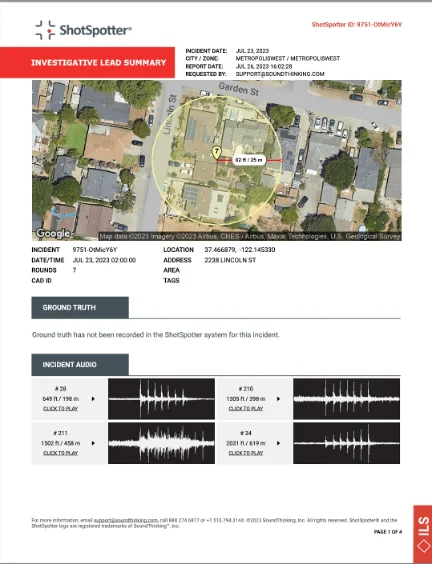
2. Establish the exact time the shooting started and ended
Quite often, parties need ShotSpotter evidence to establish the exact time a shooting occurred. ShotSpotter sensors and servers are synchronized to GPS satellite time, which is in turn synchronized to the atomic clock at the National Institute of Standards and Technology in Boulder, CO.
Often, evidence such as cell phone records, surveillance camera footage, or ankle monitors (!) places suspects/defendants on or near the scene, but the case is missing that timing link to the shooting.
We know 911 calls are often placed after a delay, sometimes a significant one. Witness accounts rarely establish the exact millisecond of discharge. And who’s to say whether a liquor store’s surveillance camera time stamp is accurate enough to establish a tight timeline?
Expert Witnesses at SoundThinking can conduct forensic analyses of shooting incidents for trial, resulting in Detailed Forensic Reports (DFR). The DFR includes a table of the trigger-pull times for each captured discharge. Request a DFR for use at trial using this form to link the shooting timeline up to your other evidence that places the suspect/defendant at the shooting.
3. Prove who fired first
If your case involves parties shooting at each other, the outcome at trial may depend on the ability to show who fired the first shot (or if they essentially fired simultaneously).
Depending on the facts of the case – most notably the distance the shooters were from each other – ShotSpotter Expert Witnesses may be able to testify that the first shot was fired from the northwest corner of an intersection, for instance, while return fire came from the southeast corner or from down the street.
I charged a case in Oakland where a pimp and a “customer” got into a shootout at close range, tragically killing the young woman in the pimp’s car. Although ShotSpotter evidence could not be parsed out so finely as to determine who shot first at nearly arm’s length, it did establish that the two men shot within milliseconds of each other, thus establishing nearly simultaneous discharge. That was enough to keep the jury from accepting claims of pure self-defense for either of the men, who were both charged with the young woman’s murder.
ShotSpotter Evidence in Other Court Proceedings
These are the three basic uses of the audio recordings or expert testimony used at trial. But, there are other instances where a detailed forensic report and audio recording may be of benefit. For example, ShotSpotter audio recordings can be used as evidence in trials, or even in pre-trial motions like a Fourth Amendment Motion to Suppress or a bail hearing, and all the way through sentencing in requesting an aggravated prison term.
The utility of ShotSpotter evidence can extend even into sentencing proceedings. During plea discussions, playing the actual audio of sustained gunfire can motivate more realistic negotiations from defendants who might otherwise minimize their conduct. And the audio recordings can transform abstract discussions of “discharge of a firearm” into a visceral understanding of the terror inflicted on victims and communities.
ShotSpotter Forensic Services
After 25 years of prosecuting violent crimes in Oakland, I’ve seen firsthand how the right evidence can transform a case. ShotSpotter technology provides far more than rapid police response – it delivers objective, scientifically precise evidence that can prove critical elements at trial.
From establishing premeditation through shot cadence analysis to disproving self-defense claims through shot sequencing, ShotSpotter evidence fills gaps that witness testimony and surveillance footage often cannot. The technology’s GPS-synchronized timing and audio recordings provide juries with facts, not assumptions, about what happened during those crucial seconds of gunfire.
For my fellow prosecutors and detectives working these challenging cases: don’t overlook this powerful tool in your evidence arsenal. Whether you’re trying to prove intent, establish a timeline, or determine who initiated a deadly confrontation, ShotSpotter’s Forensic Services capabilities can make the difference between conviction and acquittal.
